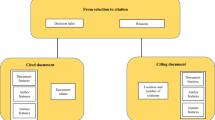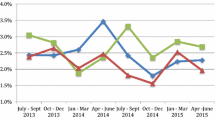Abstract
Harzing (Scientometrics, 2013) showed that between April 2011 and January 2012, Google Scholar has very significantly expanded its coverage in Chemistry and Physics, with a more modest expansion for Medicine and a natural increase in citations only for Economics. However, we do not yet know whether this expansion of coverage was temporary or permanent, nor whether a further expansion of coverage has occurred. It is these questions we set out to respond in this research note. We use a sample of 20 Nobelists in Chemistry, Economics, Medicine and Physics and track their h-index, g-index and total citations in Google Scholar on a monthly basis. Our data suggest that—after a period of significant expansion for Chemistry and Physics—Google Scholar coverage is now increasing at a stable rate. Google Scholar also appears to provide comprehensive coverage for the four disciplines we studied. The increased stability and coverage might make Google Scholar much more suitable for research evaluation and bibliometric research purposes than it has been in the past.







Similar content being viewed by others
References
Adler, N., & Harzing, A.W. (2009). When Knowledge Wins: Transcending the sense and nonsense of academic rankings. The Academy of Management Learning & Education, 8(1), 72–95.
Egghe, L. (2006). Theory and practice of the g-index. Scientometrics, 69(1), 131–152.
Harzing, A.W. (2007). Publish or Perish, available from http://www.harzing.com/pop.htm.
Harzing, A.W. (2013). A preliminary test of Google Scholar as a source for citation data: A longitudinal study of Nobel Prize winners, Scientometrics, 93(3), 1057–1075. doi:10.1007/s11192-012-0777-7.
Harzing, A. W., & van der Wal, R. (2008). Google Scholar as a new source for citation analysis? Ethics in Science and Environmental Politics, 8(1), 62–71.
Hirsch, J. E. (2005). An index to quantify an individual’s scientific research output. Proceedings of the National Academy of Science USA, 102, 16569–16572.
Jacsó, P. (2010). Metadata mega mess in Google Scholar. Online Information Review, 34(1), 175–191.
Kousha, K., & Thelwall, M. (2007). Google Scholar citations and Google Web/URL citations: A multi-discipline exploratory analysis. Journal of the American Society for Information Science and Technology, 58(7), 1055–1065.
London School of Economics and Political Science. (2011). Impact of the social sciences: Maximizing the impact of academic research. Available online at: http://blogs.lse.ac.uk/impactofsocialsciences/.
Marginson, S. (2007). Global university rankings: Implications in general and for Australia. Journal of Higher Education Policy and Management, 29(2), 131–142.
Author information
Authors and Affiliations
Corresponding author
Rights and permissions
About this article
Cite this article
Harzing, AW. A longitudinal study of Google Scholar coverage between 2012 and 2013. Scientometrics 98, 565–575 (2014). https://doi.org/10.1007/s11192-013-0975-y
Received:
Published:
Issue Date:
DOI: https://doi.org/10.1007/s11192-013-0975-y




